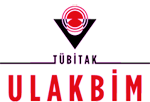The Evaluation of the Relationships Between Sleep Apnea Syndrome and Depression/Anxiety DisorderYusuf Ehi1, Seyho Yücetaş2, Yelda Yenilmez3, Serhat Tunç3, İnan Gezgin2, Mehmet Yasar Özkul41Kafkas University Faculty of Medicine, Department of Neurology, Kars, Turkey
2Kafkas University Faculty of Medicine, Department of Neurosurgery, Kars, Turkey
3Kafkas University Faculty of Medicine, Department of Psychiatry, Kars, Turkey
4Şifa University of Medicine Faculty, Department of Neurology, İzmir, Turkey
AIM: Sleep apnea syndrome (SAS) is commonly seen disorder in the population. There are many studies using different questionnaires to evaluate the patients who are diagnosed wit SAS and also suffering from depression and anxiety disorder; as there are many different questionnaires to evaluate these patients, the results of these studies have many discrepancies. We aim to research correlation of anxiety and depression with this study.
METHODS: 134 cases were recruited for the polysomnographic evaluation and these cases are used as the subjects of this study. The participating patients are divided into two main groups: 51 cases with AHI<5 are selected as the control group and the remaining 83 cases with AHI>5 are named as the patient group. Later, these groups are subdivided into 3 more classes; the first one was the mild SAS patients consisting of 27 cases with AHI: 514.9, second one was the middle SAS patients consisting of 24 cases with AHI: 1529.9 and finally the third one was the heavy SAS class which was consisting of 32 patients with AHI≥30. Hospital Anxiety Depression Test (HADT) was applied to all cases.
RESULTS: 56.7% of the patients participating to the study were male and the remaining 43.3% of the patients were female. The mean age was 48.54±10.59. Control group the mean body mass index (BMI) was 30.11±4.84, patient group the mean BMI was 31.97±5.10. There was no statistically significant correlation between the depression and anxiety scores and AHI scores of the control and patient groups.
CONCLUSION: We used the HAD scale to evaluate excessive daytime sleepiness and the concurrence with depression and also to determine whether a correlation was present between the apnea-hypopnea index values and HAS scores in these patients in this study. Keywords: Sleep Apne Syndrome, anxiety, depression
Uyku Apne Sendromu ile Anksiyete ve Depresyon Birlikteliğinin DeğerlendirilmesiYusuf Ehi1, Seyho Yücetaş2, Yelda Yenilmez3, Serhat Tunç3, İnan Gezgin2, Mehmet Yasar Özkul41Kafkas Üni̇versi̇tesi̇ Tıp Fakültesi̇ Nöroloji̇ Kli̇ni̇gi̇, Kars Türki̇ye
2Kafkas Üni̇versi̇tesi̇ Tıp Fakültesi̇ Beyi̇n Ve Si̇ni̇r Cerrahi̇si̇ Kli̇ni̇gi̇, Kars Türki̇ye
3Kafkas Üni̇versi̇tesi̇ Tıp Fakültesi̇ Psi̇ki̇yatri̇ Kli̇ni̇gi̇, Kars Türki̇ye
4Şi̇fa Üni̇versi̇tesi̇ Tıp Fakültesi, Nöroloji̇ Kli̇ni̇ği̇, İzmi̇r Türki̇ye
AMAÇ: Uyku Apne Sendromu (UAS), toplumda yaygın olarak görülen bir hastalıktır. UASlu hastalarda, depresyon ve anksiyete birlikteliğini değerlendirmek farklı ölçeklerin kullanıldığı çalışmalar olmakla birlikte bu konuyla alakalı çelişkili sonuçlar bulunmaktadır. Bu çalışmamızda amaç UAS ile anksiyete ve depresyon korelasyonunu araştırmaktır.
YÖNTEM: Çalışmaya polisomnografik inceleme yapılan 134 olgu alındı. Apne-Hipopne İndeksi (AHİ) <5 olan 51 olgu kontrol grubu, AHİ ≥5 olan 83 olgu hasta grubu olarak oluşturuldu. Hasta grubu üç grup şeklinde sınıflandırıldı. 1) AHİ 514,9 olan 27 olgu hafif UAS; 2) AHİ: 1529.9 olan 24 olgu orta düzey UAS; 3) AHİ ≥30 olan 32 olgu ağır UAS idi. Tüm hastalara, Hastane Anksiyete ve Depresyon ölçeği uygulandı.
BULGULAR: Çalışmaya dahil edilen hastaların 76 (%56,7)si erkek, 58 (43,3)ü ise kadındı. Hastaların yaş ortalaması 48,54±10,59 idi. HAD ölçeğinde kesme puanına göre depresyon tanısı alan olgu sayısı kontrol grubunda 18 (%35,29), hasta grubunda 30 (%36,14) kişiydi. Hasta grubunun alt grupları değerlendirildiğinde, Hafif UASde 10 (%37,03), Orta UASde 9 (%37,50), Ağır UASde 11 (%34,37) olgu olarak bulundu. Kesme puanına göre anksiyete tanısı alan olgu sayısı kontrol grubunda 19 (%37,25), hasta grubunda 27 (%32,53) kişiydi. Hasta grubunun alt grupları değerlendirildiğinde hafif UAS 9 (%33,33), orta UAS 8 (%33,33), ağır UAS 10 (%31,25) olarak bulundu. Kontrol ve hasta grubunun anksiyete ve depresyon skorları ile AHİ karşılaştırıldığında istatistiksel olarak anlamlı korelasyon yoktu (p>0,05).
SONUÇ: Çalışmamızda; HAD ölçeği kullanılarak gündüz aşırı uykululuğu, tanıklı apnesi ve horlaması olan hastalarda anksiyete ve depresyon birlikteliğini değerlendirmeyi ve bunun yanı sıra bu hastalarda apne-hipopne endeksi değerleri ile HAD puanlarının arasında korelasyonun olup olmadığını belirlemeyi amaçladık. Anahtar Kelimeler: Uyku Apne Sendromu, anksiyete, depresyon
Yusuf Ehi, Seyho Yücetaş, Yelda Yenilmez, Serhat Tunç, İnan Gezgin, Mehmet Yasar Özkul. The Evaluation of the Relationships Between Sleep Apnea Syndrome and Depression/Anxiety Disorder. Kafkas J Med Sci. 2016; 6(2): 88-93
Corresponding Author: Yusuf Ehi, Türkiye |
|









 Full Text PDF
Full Text PDF Print
Print Download citation
Download citation Share with email
Share with email Share
Share Send email to author
Send email to author Similar articles
Similar articles PubMed
PubMed